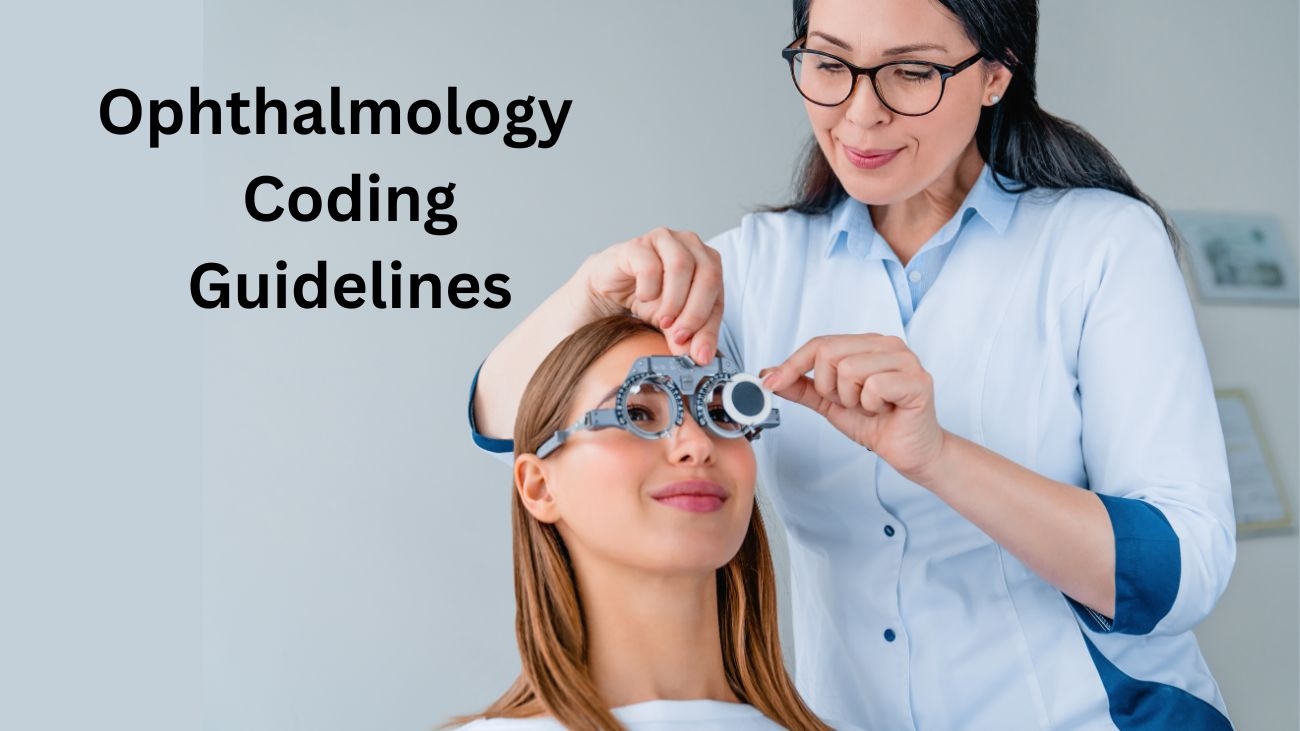As the realm of healthcare continuously evolves, ensuring accurate medical coding is paramount to maintaining efficient operations and proper reimbursement. Ophthalmology, a specialized field focused on eye care, has its own unique set of coding guidelines and challenges. In this blog post, we’ll dig into the world of ophthalmology coding, uncover common errors that practitioners often encounter, and provide actionable insights on how to prevent them.
Understanding Ophthalmology Coding Guidelines
Ophthalmology coding is a complex process that involves assigning specific codes to describe medical services, procedures, and diagnoses related to eye care. Proper coding is essential for healthcare providers to receive appropriate reimbursement and maintain compliance with industry standards. The American Academy of Ophthalmology (AAO) offers comprehensive coding guidelines to aid practitioners in accurate code selection.
Common Ophthalmology Coding Errors
- Unbundling Codes: This occurs when individual components of a procedure are billed separately instead of using a single comprehensive code. It’s essential to understand which services are inclusive within a specific code.
- Incorrect Modifiers: Modifiers provide additional information about a service or procedure, but their misuse can lead to claim denials or incorrect reimbursement. Understanding modifier guidelines is crucial.
- Lack of Specificity: Inaccurate or incomplete documentation can lead to generic coding, resulting in missed reimbursement opportunities. Specificity in diagnosis and procedure descriptions is vital.
- Improper Use of E/M Codes: Evaluation and Management (E/M) codes are often incorrectly assigned, leading to underreporting or overreporting of services. Proper documentation of patient encounters is key.
- Unverified Medical Necessity: Some services require clear documentation of medical necessity to support reimbursement claims. Failing to establish medical necessity can lead to denials.
Preventing Ophthalmology Coding Errors
- Education and Training: Continuous training and education on current coding guidelines and updates are crucial for both coding staff and ophthalmologists. Stay updated with AAO resources and workshops.
- Accurate Documentation: Encourage detailed and specific documentation for each patient encounter. Clear records support proper code selection and enhance medical necessity justification.
- Modifier Mastery: Thoroughly understand the purpose and appropriate use of modifiers. Ensure that modifiers accurately reflect the services provided.
- Audit and Review: Regularly conduct internal audits to identify coding discrepancies and errors. Address findings promptly to improve coding accuracy.
- Collaboration: Foster collaboration between coding staff and ophthalmologists. Effective communication ensures accurate documentation and code selection.
- Use Technology: Leverage electronic health record (EHR) systems and coding software that integrate updated coding guidelines. These tools can help prevent errors and streamline coding processes.
When to Avoid Billing an Eye Visit Code
You must be aware of nine specific circumstances before billing an E/M code in place of an eye visit code. Billing for eye visits in these circumstances may result in a refusal and/or patient liability.
- The ICD-10 code(s) is not a covered diagnosis for eye visit codes. Eye visit codes are typically used to bill for routine eye exams and preventive services. If the patient’s diagnosis is not covered by the eye visit codes, then you should bill an E&M code instead.
- The place of service (POS) is not the office. Eye visit codes can only be billed for office visits. If the patient is seen in the hospital, emergency department, or other non-office setting, then you should bill an E&M code for the visit.
- The patient is seen for a screening exam. Screening exams are not covered by eye visit codes. If the patient is seen for a screening exam, such as a glaucoma screening, then you should bill the appropriate screening code.
- The patient is seen for a diagnostic test. Diagnostic tests, such as an eye ultrasound or a visual field test, are not covered by eye visit codes. You should bill the appropriate diagnostic test code for these services.
- The patient is seen for a procedure. Procedures, such as cataract surgery or LASIK surgery, are not covered by eye visit codes. You should bill the appropriate procedure code for these services.
- The patient is seen for a follow-up visit. Eye visit codes can only be billed for the initial eye exam. If the patient is seen for a follow-up visit, then you should bill an E&M code for the visit.
- The patient is seen for a consult. Consults are not covered by eye visit codes. If the patient is seen for a consult with another doctor, then you should bill the appropriate consult code.
Common Used ICD-10 Codes for Ophthalmology:
- Certain infectious and parasitic diseases (A00-B99)
- Infections with a predominantly sexual mode of transmission (A50-A64)
- Viral infections characterized by skin and mucous membrane lesions (B00-B09)
- Diseases of the eye and adnexa (H00-H59)
- Disorders of ocular muscles, binocular movement, accommodation and refraction (H49-H52)
- Visual disturbances and blindness (H53-H54)
- Disorders of eyelid, lacrimal system and orbit (H00-H05)
- Disorders of vitreous body and globe (H43-H44)
- Disorders of choroid and retina (H30-H36)
- Other disorders of eye and adnexa (H55-H57)
- Disorders of lens (H25-H28)
- Glaucoma (H40-H42)
- Injury, poisoning and certain other consequences of external causes (S00-T88)
- Effects of foreign body entering through natural orifice (T15-T19)
- Injuries to the head (S00-S09)
- Factors influencing health status and contact with health services (Z00-Z99)
- Persons encountering health services for examinations (Z00-Z13)
In the intricate world of ophthalmology coding, precision is paramount. Accurate coding not only ensures proper reimbursement but also supports the overall quality of patient care. By understanding the guidelines, recognizing common errors, and implementing preventive measures, ophthalmology practices can navigate the coding landscape with confidence.
Remember, staying informed about coding updates and fostering a culture of continuous learning are integral to reducing errors and maintaining the financial health of your ophthalmology practice.




